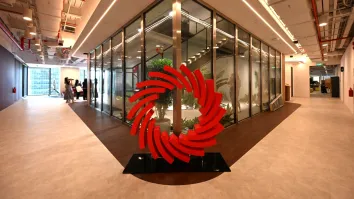Partnering to build the next digital bank in Malaysia
By Clarence Koo, Anirudh Singh, and Jayant RamanA banking revolution is sweeping across Asia as increasing numbers of countries introduce new regulatory frameworks for digital banking. Malaysia is next: Bank Negara Malaysia (BNM), the central bank, is currently seeking industry comments on a proposed framework for digital-bank licence applications.
Fintechs, traditional financial institutions, tech giants, and other large corporations are now eyeing the opportunity – and many are doing so in consortiums to maximise their chances.
Regulators require that applicants demonstrate deep capabilities in several areas. In Malaysia, these capabilities will include furthering financial inclusion, technological innovation, customer analytics, and a solid understanding of banking risk management and compliance, according to the draft framework circulated by BNM. In addition, a consortium presents its members with an opportunity for potential synergies. These introduce the ability to deliver better services to target customers and improve the consortium’s chances of being awarded a licence.
However, forming a consortium to create an application is complex. The partners each need to thoroughly consider their potential contributions and interaction, and how they would form the bank.
Based on our experience of working with [digital bank license] applicants in Hong Kong and Singapore, we developed some primary considerations for potential applicants. These aim to help the partners discuss and agree on how to build a successful digital banking consortium.
What components are required?
Consortium partners need a common understanding of the components needed to build a bank and of what each partner will contribute. Broadly, they need to cover five areas:
- Access to a sizeable customer base: This is essential to sustain a digital bank and make it profitable. For example, BNM has placed strong emphasis on financial inclusion, and players with meaningful access to underbanked rural and urban population segments will have an edge.
- Distribution channels and customer touchpoints: Building a profitable digital bank will likely require a variety of customer touchpoints, where nudges towards various financial products can be placed. These could include a combination of both online and offline channels for various kinds of business: travel services, e-commerce, gaming, e-wallets, convenience stores, remittance services, gas stations etc. A successful consortium will likely need multiple customer touchpoints to quickly scale up its offerings and build engaging, sticky relationships with its customers.
- Ability to provide financial products to target customers: In Malaysia, whilst a large number of adults have bank accounts, only about 40 percent have a credit facility. This is primarily due to traditional banks’ inability to assess the risk of most customers. So a key success factor for new digital banks will be an ability to provide financial products – such as financing, insurance, savings, investment, payments, and remittances – in a price-efficient manner. To do this they will need alternative data sources for credit evaluation, and they will have to create microproducts to suit the needs of target customers.
- Technology and analytics expertise: Several digital banks will be launched around the same time, and none will have a physical presence. So it will be important for each bank to provide a top-quality digital customer experience to attract customers. In addition, technology can greatly reduce the cost of acquiring and servicing customers, enabling the new banks to pursue previously underserved segments of the population. Moreover, as these underserved customers will have diverse needs, the use of analytics to deliver tailored propositions will help the new bank scale quickly, which will be crucial for its success.
- Risk management and compliance: Many consortiums will have fintechs as participating members, but they are typically unfamiliar with the level of regulatory scrutiny to which banks are subject. So risk management and compliance will be important criteria in the assessment of applications. This implies that consortiums will have an advantage if they also include members demonstrating experience of risk management, compliance, and traditional banking. Expertise will be particularly relevant in cyber and information security, anti-money laundering, and compliance aimed at preventing financial crimes.
What is the structure of the partnership?
It is important for consortium members to agree in advance on the structure of their partnership. This includes answering questions such as the following:
- Which partner will lead the consortium? What will be each partner’s shareholding?
- How will each partner bring value to the new venture? How much will each contribute in cash, other assets, human resources, and expertise? At the current stage, to what extent can their planned contributions be considered commitments?
- Beyond financial returns, what is each partner expecting to obtain from the new venture?
- How will the appointment of key executive positions be divided amongst the consortium partners?
- If a fintech’s business is subsumed into the new bank, how will it be valued? Do all partners agree with the valuation of the fintech’s business?
These considerations are strategic in nature and will have potential reputational and financial impacts, so the decisions need to be made at the most-senior levels and may need board approval. Based on our experience working with applicants for digital banking licences, we encourage proactively seeking the necessary board approvals to ensure shared understanding by all stakeholders.
How will the new bank be governed?
Consortium members should agree on an optimal governance structure. This will assure the regulator that the consortium has made good governance a priority and considered it thoroughly. A structure also makes each partner accountable for delivering on the capabilities it has promised. Key considerations include the following:
- What will be the digital bank’s organisational and governance structure? That is, how will its various functions be structured?
- How will consortium partners bring their expertise to the bank? Will they transfer people or assets? Or will they bring their capabilities in some other way?
- How will the consortium partners contribute staff? Through managerial appointments, secondments, contractual arrangements, or other means?
- What will be the working cadence at the new bank? How will partners, particularly those that are not fintechs, ensure that decision making is agile and timely?
- How will the non-fintech members be able to bring experience and learnings from this venture back to their main organisation?
Consortia inevitably bring organisations of different styles and strengths together so the cultural challenges of enabling successful collaboration should not be underestimated.
How will the new bank deliver the value proposition?
Potential consortium members should think about how to deliver the agreed value proposition to customers. This implies developing a clear understanding of how the consortium members will build and contribute to the new bank:
- How will the partners share data with the new digital bank? They will need to comply with data privacy requirements, whilst still developing innovative propositions.
- What changes – especially in technology – will the consortium partners need to make in order to deliver the customer propositions? What investments are needed to make these changes? Does the timing of these changes fit the new bank’s launch timelines?
- What will be the value share mechanism between members’ respective distribution channels and the new bank? Will use of member resources require the agreement of arm’s length commercial agreements?
Where should a consortium start?
To succeed, all consortium partners must perceive clear value from investing in the business and believe in the value the new bank will bring to the customers. They must reinforce their mutual commitment, create structures that ensure accountability, and carry out an effective transfer of capabilities to the new bank. A consortium can only be built by bringing together different parties and holding difficult conversations upfront. The key considerations listed above, as well as the options for each consideration, need to be evaluated and thoroughly discussed before decisions are made. Only then can partners truly hope to build a winning digital bank.



















 Advertise
Advertise








